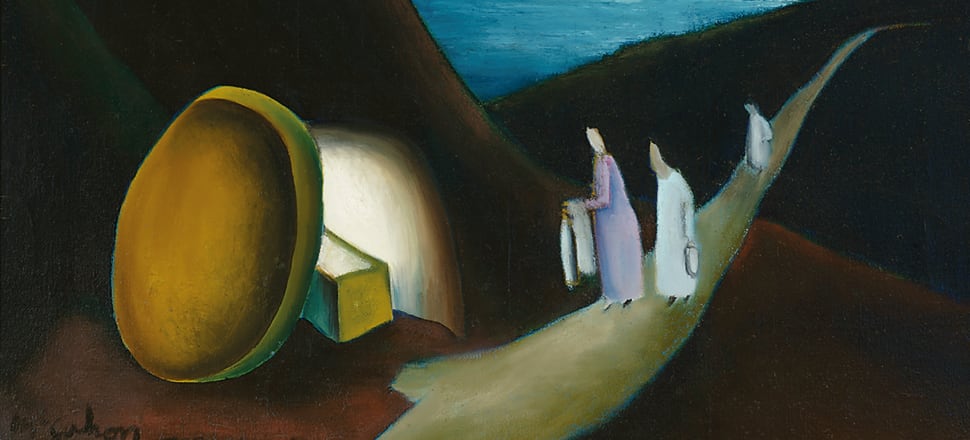Review: The Art of Colin McCahon, Rex Butler and Laurence Simmons, Monash University Publishing
The art critic Robert Hughes once described New Zealander Colin McCahon as the most important painter in the southern hemisphere. Rex Butler and Laurence Simmons, in this book about McCahon, concur, making some interesting points about McCahon’s use of biblical texts, which grew to dominate McCahon’s paintings and that prompted questions about what endures in life. Intriguingly, they argue that the texts in the paintings link the Christian idea of resurrection and the afterlife of an artist, and rather than being incidental to the art, this is exactly what McCahon’s art is about.
The authors trace McCahon’s career but they are primarily interested in how McCahon positioned himself – the way McCahon influenced other artists and was in dialogue with older artists, arguing, extraordinarily, that McCahon is inescapable because his art – as great art does – plants itself firmly in art history, not by making definitive statements but by being open-ended, capable of multiple interpretations and conversing with the art of past and future.
McCahon cultivated his own reputation by being inside the art establishment, as lecturer and gallery director. His self-promotion was a bit unusual in the 1960s and 1970s, though we are now more used to shameless self-promoters such as Damien Hirst, for whom the whole art business is part of the performance of postmodernism. McCahon gave away lots of work to institutions so that he would be in the public eye, and effectively disinherited his family by stipulating in his will that all his works should go to New Zealand galleries. (His family successfully contested the will.) The authors here argue that, like Christ, McCahon cultivated dedicated followers, including amongst the viewing public. But McCahon was also wary of popularity – with an eye on longevity he noted that often artists (like prophets) are not appreciated in their own countries and that reputations are fragile. The critic Clement Greenberg noted that McCahon deliberately held an ‘independent course’ away from art fashions.
McCahon’s art was full of religious themes, meditating on faith, doubt and eternity, while simultaneously meditating on how this applies to the process of art and the longevity of the artist. His early style displays a primitive figuration, embellished by snippets of biblical text – superficially like the folk art of Howard Finster. His art importantly situated biblical events in the New Zealand landscape, implying equally that the biblical events have universal importance and that New Zealand is a worthy setting for them. By the time of his late, great style the figures had all but disappeared in favour of text, painted across black canvasses in loopy handwriting. There are parallels to the likes of Australian artist Rosalie Gascoigne in the paring down of style to simple essences. Butler and Simmons suggest this paring down has deliberate affinities with notions of purification in Christian faith.
While the handwriting might suggest the lines of Emily Kngwarreye, say, the choice of biblical texts was integral. But Butler and Simmons caution that we can’t think of McCahon as simply promoting Christianity. They describe his attitude to religion as ‘modern’. McCahon had religious faith but moved between enthusiastically thinking about how Christianity played out in practice in the community and misgivings about certain doctrines. Butler and Simmons eschew simple ‘either/or’ interpretations and suggest that McCahon’s art shows the ambiguities and complications of faith and doubt. McCahon’s art explores the chance that the message of the Bible will be misunderstood, that despite being in bold print, so-to-speak, it is constantly reinterpreted (as art is). In this, McCahon, as a ‘careful reader of the Bible’, takes seriously both the importance of faith and the questions that circle it, and the dialectic that churns in the lives of other believers.
Nick Mattiske blogs on books at coburgreviewofbooks.wordpress.com and is the illustrator of Thoughts That Feel So Big.














